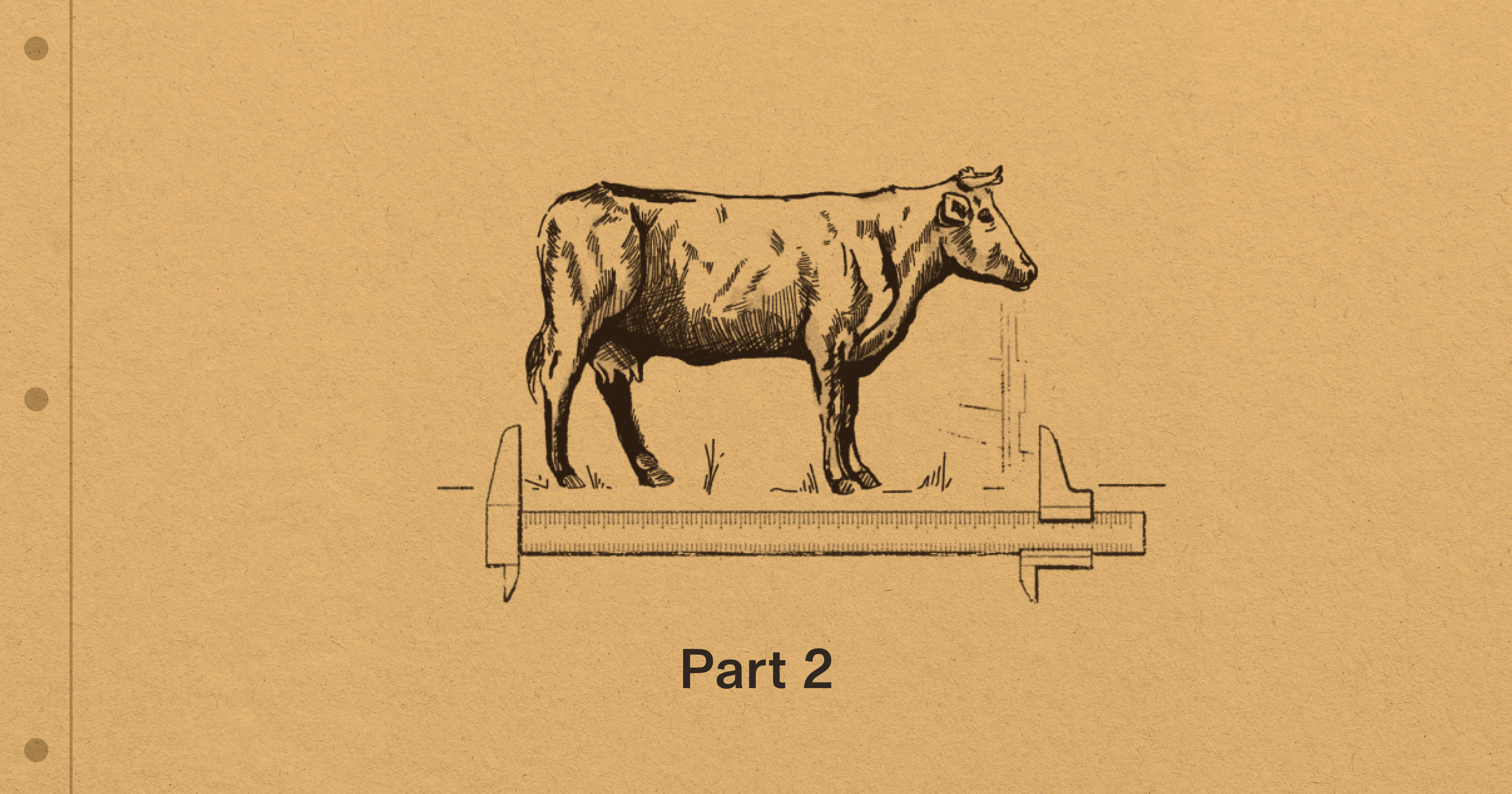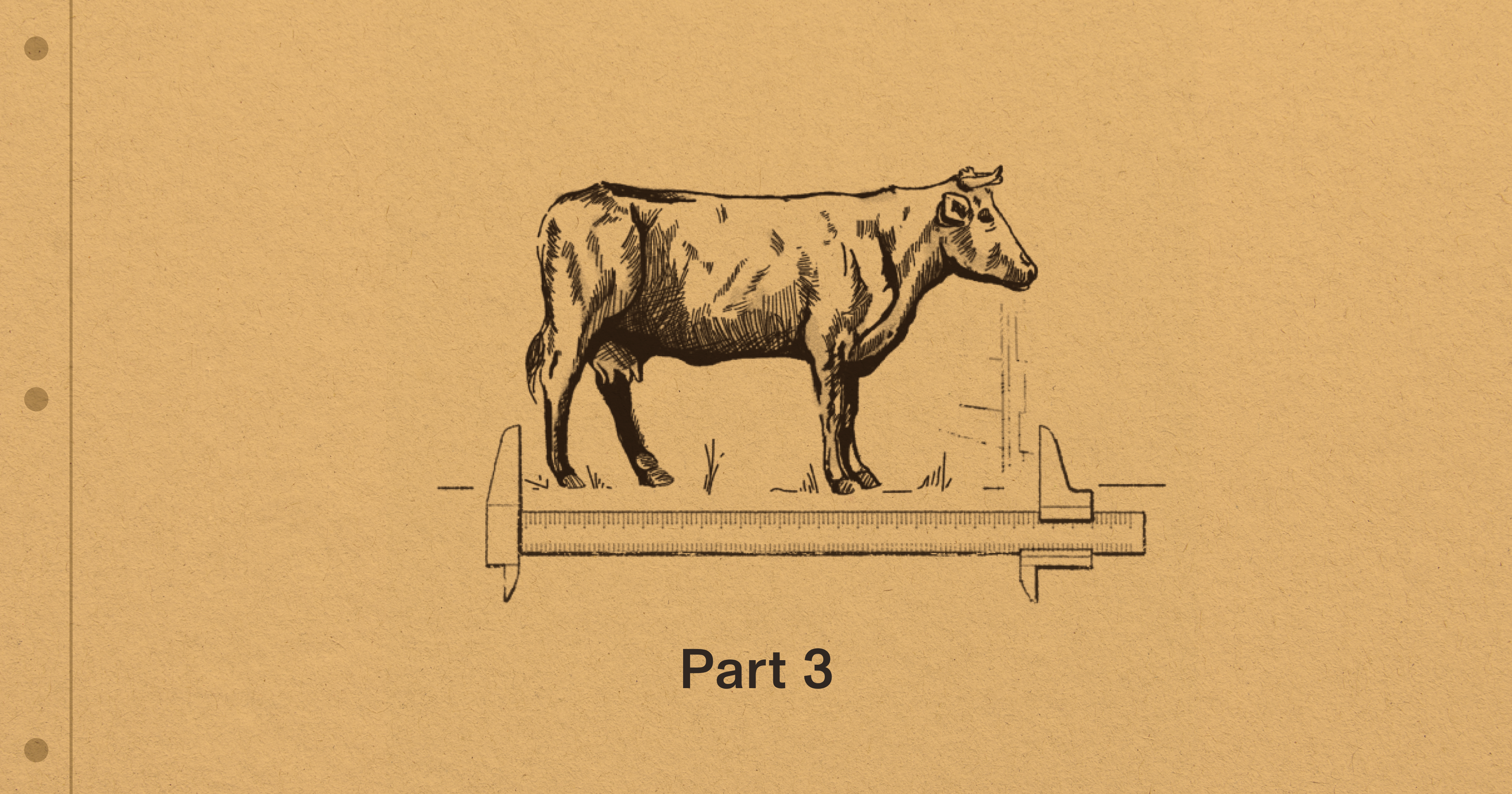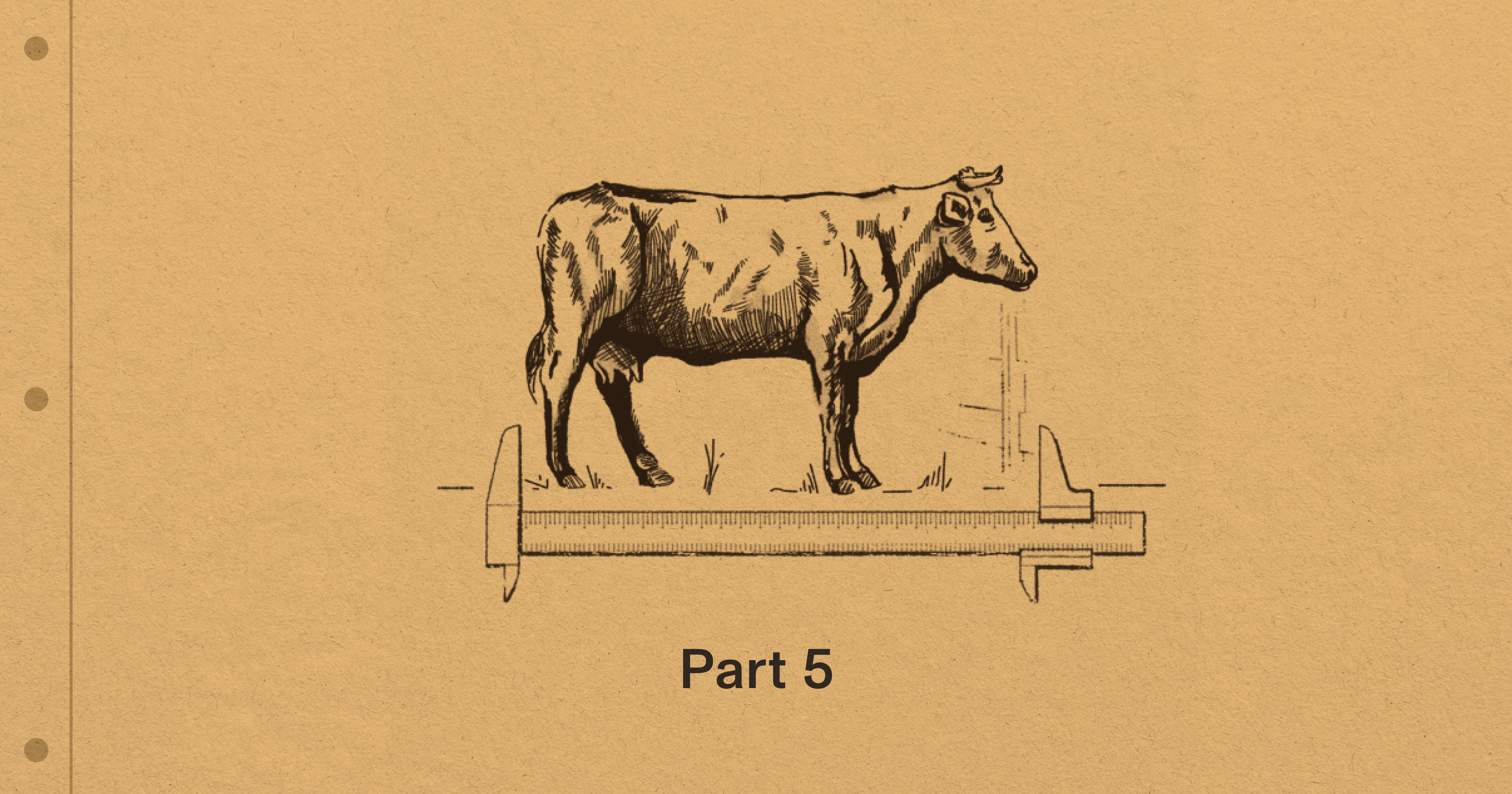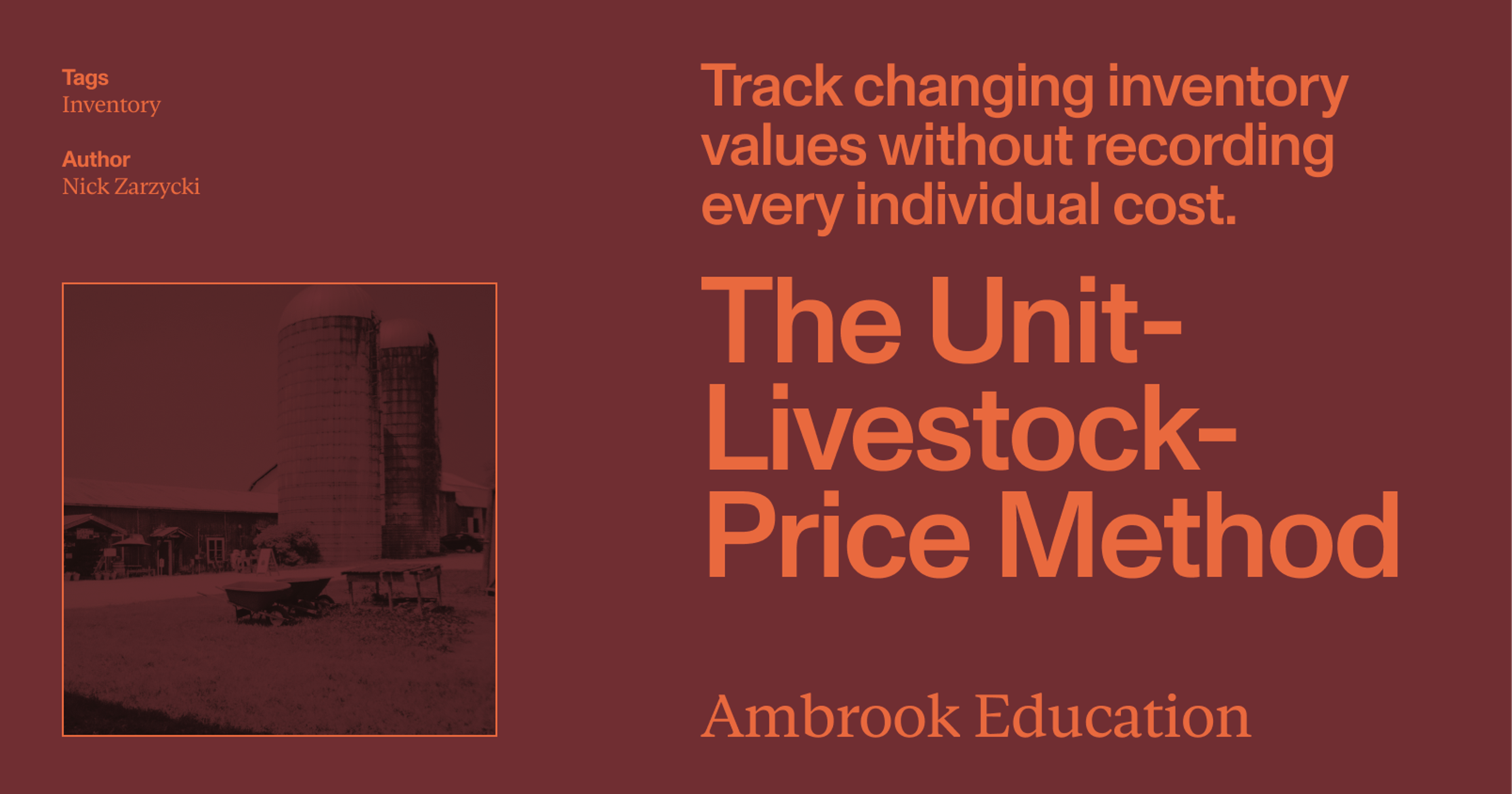Part Two of Managerial Accounting for Raising Livestock for Cow-calf, Dairies, and other Breeding Stock Operations
Previously we discussed Why Managerial Accounting is Important for livestock operations. In this article, we will discuss the basic, livestock-related accounting concepts you need to know as a bookkeeper for your cattle operation.
Many operations prepare their books and file their taxes on a cash basis. This is practical because it makes the books easier to manage and lets you deduct taxable expenses in the year they are incurred, but important insights about the business such as investments into assets or future revenues can get lost. For example, you or your accountant may track certain assets on your depreciation schedule according to Section 179, but this may give less useful information (see Ranch KPI note on this) when trying to make operational decisions based on your financials – just because you deduct 100% of an asset on a tax basis does not mean it’s worth $0 in net value to your business.
Accounting note - The general point to understand above is that there is a concept of book depreciation, which is different from tax depreciation. Book depreciation assumes that an asset loses value on a regular schedule over time as a result of regular wear & tear. Tax depreciation allows for situations where you can deduct asset purchases like normal spend – for example, recognizing the full cost as an expense in the year a purchase happens. Tax depreciation should be managed by a professional accountant, but book depreciation is something operators can log on their own and is useful for making operational decisions.
This guide is designed to teach managerial bookkeeping practices that can help assess the full scope of your business, especially your livestock inventory. Most operators already collect the data needed to do this type of analysis in day-to-day work. You keep track of your herd, you have a rough sense of how much feed each animal group gets, you know what your overhead costs are, and so on. Knowing how to use those different inputs from an accounting perspective to unlock useful insights is the opportunity.
Classifying Livestock Assets
For our purposes livestock can be grouped into two buckets:
Livestock held for resale: Animals that an operation intends to sell within 12-24 months depending on the type of livestock (UT extension reference). For cattle, 24 months is the number. From an accounting perspective, these are considered current assets. Because they are expected to be gone in a relatively short amount of time, these livestock are not depreciated. You can put these on a balance sheet if you want, but for the purpose of this guide we recommend not doing so because the price of livestock in the market can change significantly over time, which makes it challenging to keep those values accurate.
Breeding stock: These are animals that are going to be held for multiple years and serve the goal of producing more animals. These animals are considered productive assets with a useful life, similar to a truck or a tractor, and are considered Long-term Assets on the balance sheet. If you have breeding stock animals that you purchased they can be depreciated.
Note - For cow-calf operations, we do recommend that you track calf inventory on the balance sheet using the valuation methods described in this guide, even though a portion of your calf crop will likely become held for resale, because they are such a significant part of the operation.
For many operations, much of the breeding stock was raised, not purchased. Though there are expenses to breed and care for these animals, in terms of the balance sheet, raised breeding stock do not have a cost basis. Because of this, these particular animals cannot be depreciated on your tax schedule.
The Farm-raised Dilemma
Because farm-raised breeding stock has no cost basis and cannot be depreciated, some operators don’t consider it when calculating total assets. In terms of taxes this is correct, but practically, this understates the net worth of the operation because it doesn’t represent the fact that expenses that went into raising those animals were actually an investment in a long-term productive asset. This can make it difficult to determine the net profit (or loss) on an animal when it later dies or is sold.
Consider a 2 year-old open heifer that is culled. Over the two years she has been farm-raised, there has been significant expenses that have gone into her care. On a cash basis, when she is sold all the proceeds received will be recognized in that year, but none of the expenses from the previous fiscal years will be.
For example, say a rancher culls 50% of their breeding stock for $600 per head. In that tax year, the farm’s income will look substantial. But, if all those heifers cost $800 to raise over the previous years, the farm actually lost money on those assets. There are of course reasons why culling open heifers makes sense, but the point is that having a way to represent total expenses incurred at the time of a sale is an important principle for understanding the true cost of production.
Livestock Accounts on Ambrook
Ambrook’s accounting platform makes it easy for you to create, review and adjust asset accounts for all the different types of livestock you have. For example, with Livestock for Resale you have the option to create a current asset account (likely an inventory account), or we make it easy to track your resale purchases and incomes with income & expense categories that map to Boxes 1a and 1b on the Schedule F.
With a good understanding of fundamental accounting concepts, you will be well prepared to begin Tracking & Valuing Breeding Stock.






